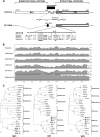Acute diarrhea in West African children: diverse enteric viruses and a novel parvovirus genus
- PMID: 22855485
- PMCID: PMC3457132
- DOI: 10.1128/JVI.01427-12
Acute diarrhea in West African children: diverse enteric viruses and a novel parvovirus genus
Abstract
Parvoviruses cause a variety of mild to severe symptoms or asymptomatic infections in humans and animals. During a viral metagenomic analysis of feces from children with acute diarrhea in Burkina Faso, we identified in decreasing prevalence nucleic acids from anelloviruses, dependoviruses, sapoviruses, enteroviruses, bocaviruses, noroviruses, adenoviruses, parechoviruses, rotaviruses, cosavirus, astroviruses, and hepatitis B virus. Sequences from a highly divergent parvovirus, provisionally called bufavirus, were also detected whose NS1 and VP1 proteins showed <39% and <31% identities to those of previously known parvoviruses. Four percent of the fecal samples were PCR positive for this new parvovirus, including a related bufavirus species showing only 72% identity in VP1. The high degree of genetic divergence of these related genomes from those of other parvoviruses indicates the presence of a proposed new Parvoviridae genus containing at least two species. Studies of the tropism and pathogenicity of these novel parvoviruses will be facilitated by the availability of their genome sequences.
Figures

References
Publication types
MeSH terms
Substances
Grants and funding
LinkOut - more resources
Full Text Sources
Other Literature Sources
Medical

